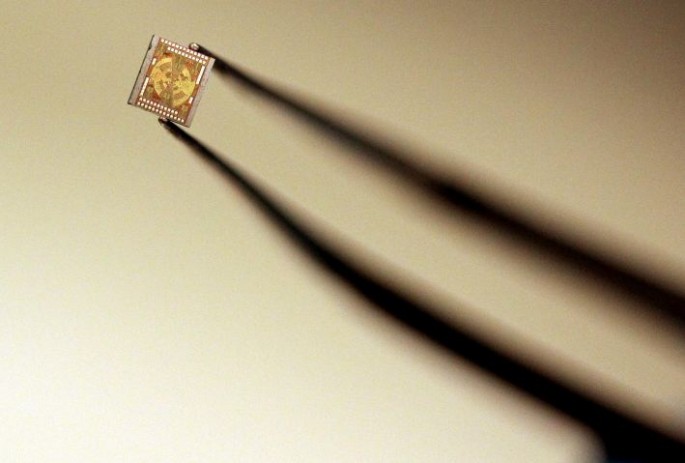Terahertz waves, which are electromagnetic pulses lasting one millionth of a millionth of a second, might hold the key to advances in medical imaging, communications and drug development. These waves, however, need elaborate and expensive equipment to use.
Now, researchers at Princeton University have drastically reduced much of that equipment. They've advanced from a tabletop setup with lasers and mirrors to a pair of microchips small enough to fit on a fingertip.
Researchers said one microchip can generate terahertz waves while a second chip can capture and read intricate details of these waves. These findings were reported in two studies recently published in the IEEE Journal of Solid State Circuits.
"The system is realized in the same silicon chip technology that powers all modern electronic devices from smartphones to tablets, and therefore costs only a few dollars to make on a large scale" said lead researcher Kaushik Sengupta, a Princeton assistant professor of electrical engineering.
Terahertz waves are part of the electromagnetic spectrum that includes radio, X-rays and visible light. It sits between the microwave and infrared light wavebands.
The waves have unique characteristics that make them interesting to science. For one, they pass through most non-conducting material.
This quality means they can be used to peer through clothing or boxes, and because they have less energy than X-rays, they don't damage human tissue or DNA.
Terahertz waves also interact in distinct ways with different chemicals, so they can be used to characterize specific substances. This feature is known as spectroscopy.
The ability to use light waves to analyze material is one of the most promising -- and the most challenging -- applications of terahertz technology.
In spectroscopy, scientists shine a broad range of terahertz waves on a target then observe how the waves change after interacting with it. The human eye performs a similar type of spectroscopy with visible light -- we see a leaf as green because light in the green light frequency bounces off the chlorophyll-laden leaf.
The challenge has been that generating a broad range of terahertz waves and interpreting their interaction with a target requires a complex array of equipment such as bulky terahertz generators or ultrafast lasers. The equipment's size and expense make the technology impractical for most applications.
Researchers have been working for years to simplify these systems. In September, Sengupta's team reported a way to reduce the size of the terahertz generator and the apparatus that interprets the returning waves to a millimeter-sized chip.
The solution lies in re-imaging how an antenna functions. When terahertz waves interact with a metal structure inside the chip, they create a complex distribution of electromagnetic fields that are unique to the incident signal.
Typically, these subtle fields are ignored, but researchers realized they could read the patterns as a sort of signature to identify the waves. The entire process can be accomplished with tiny devices inside the microchip that read terahertz waves.
"Instead of directly reading the waves, we are interpreting the patterns created by the waves," according to Sengupta. "It is somewhat like looking for a pattern of raindrops by the ripples they make in a pond."



























